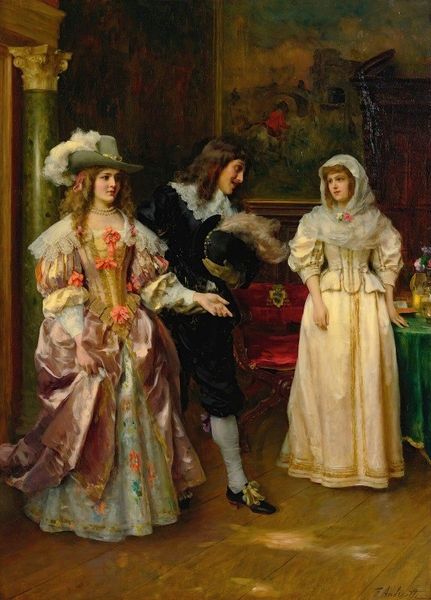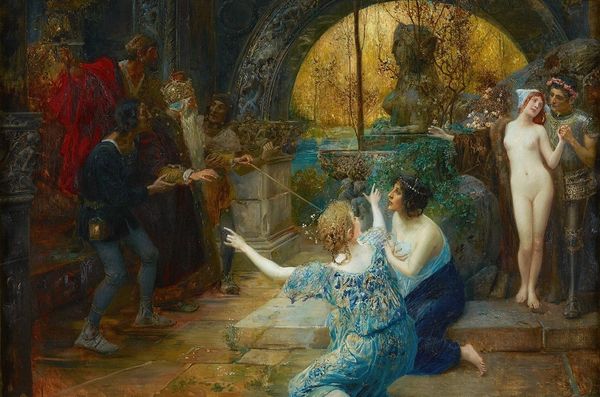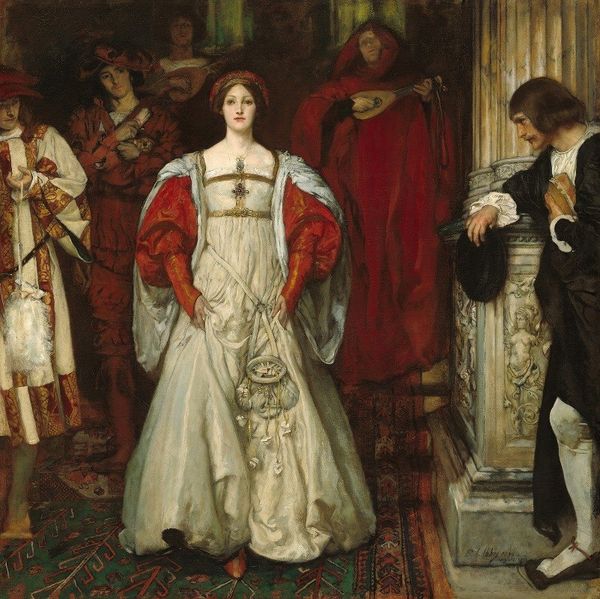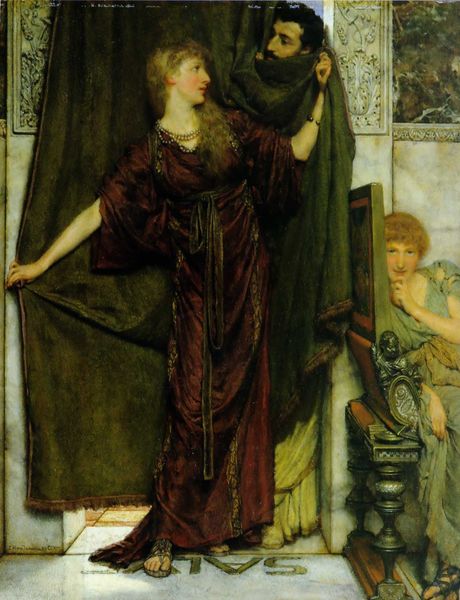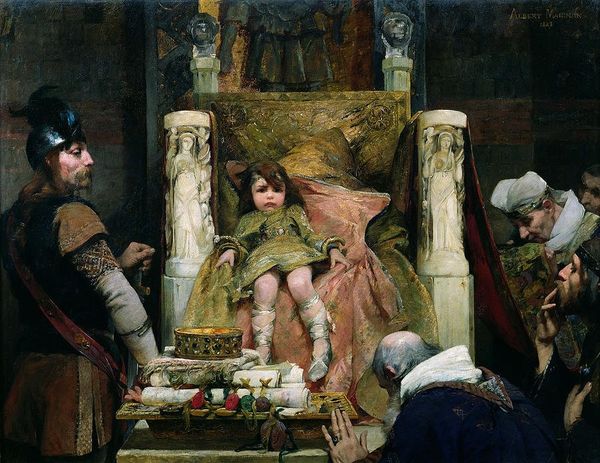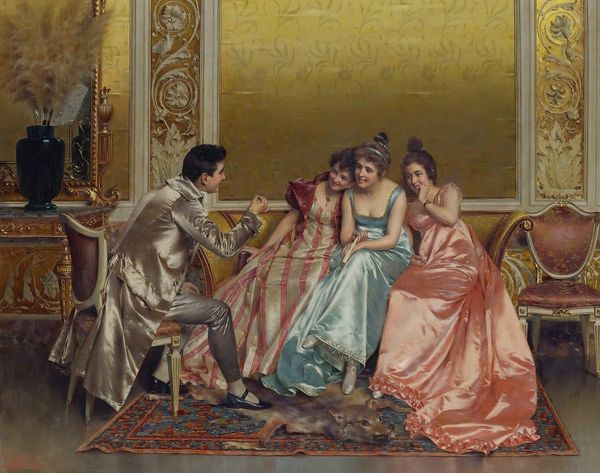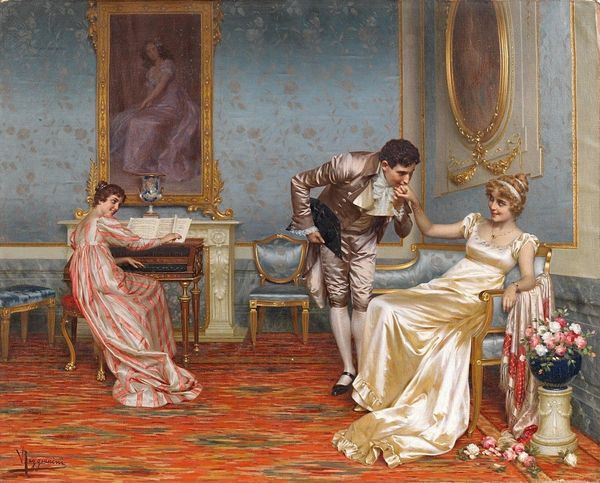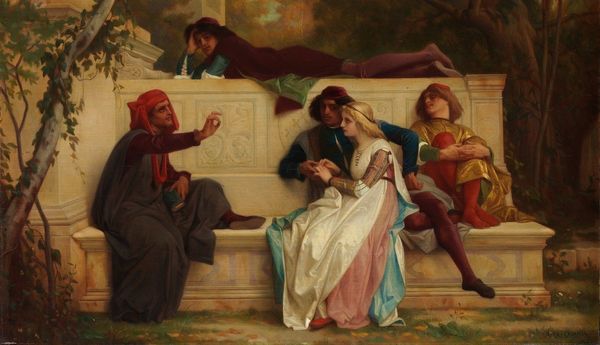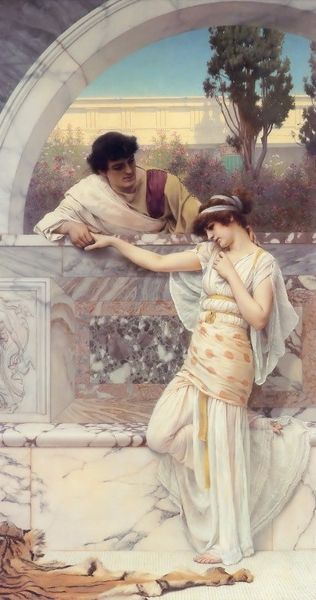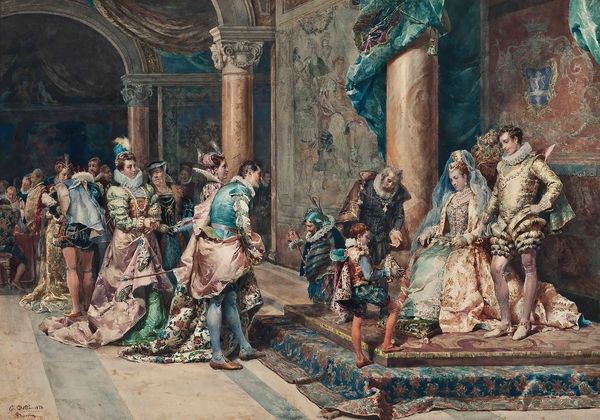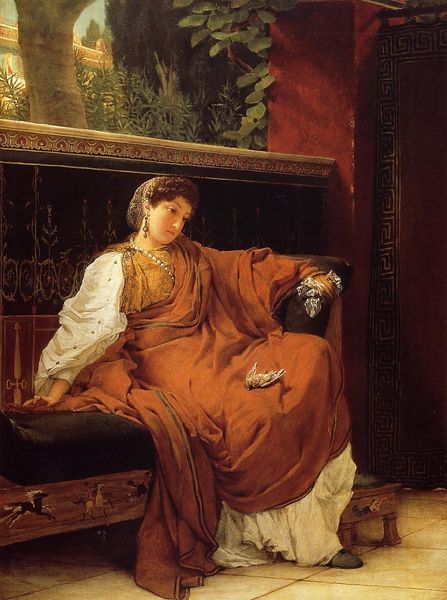
Copyright: Public Domain: Artvee
Editor: Alexandre Cabanel’s "La Belle Portia," painted in 1886, is just striking. There’s a real tension in the scene, she's seemingly at the mercy of these courtly machinations, what can you tell me about this painting from an art historical perspective? Curator: Considering the social and historical position of women in the late 19th century is critical when analyzing this work. The whispers, the confined space, her controlled expression – these all speak to the limitations placed on women, even those of noble birth, despite their intellect or agency. How do you read the power dynamic between Portia and the other figures? Editor: That’s interesting! I focused on her beauty, maybe a bit naively. Now I see the subtle power play in the composition, how she's seated but somewhat trapped by the other characters and their gazes. I guess I missed the subtext, do you see Cabanel critiquing this or just depicting it? Curator: Cabanel was an academic painter; therefore, we must proceed cautiously assuming this is an overt criticism. However, consider how he positions Portia: she meets the viewer's gaze directly, challenging us. Is this passive compliance or a quiet act of defiance within a patriarchal structure? Might he be subtly revealing the oppressive nature of such "feminine" ideals? What does the gaze communicate to you? Editor: That’s a powerful interpretation. I had only thought of beauty. Now I understand it differently, like she’s a character caught in a play about social expectations. It opens a dialogue beyond just aesthetic appeal. Curator: Exactly. Recognizing art as an extension of political and social history transforms our experience of viewing, so context is key! Editor: Absolutely! I will think more about these ideas moving forward.
Comments
No comments
Be the first to comment and join the conversation on the ultimate creative platform.

